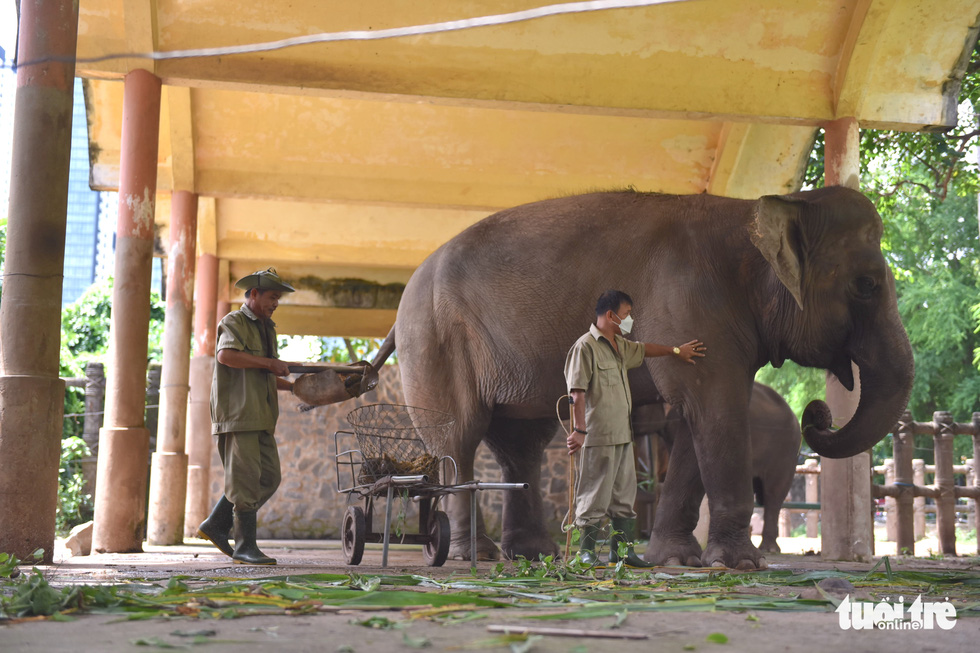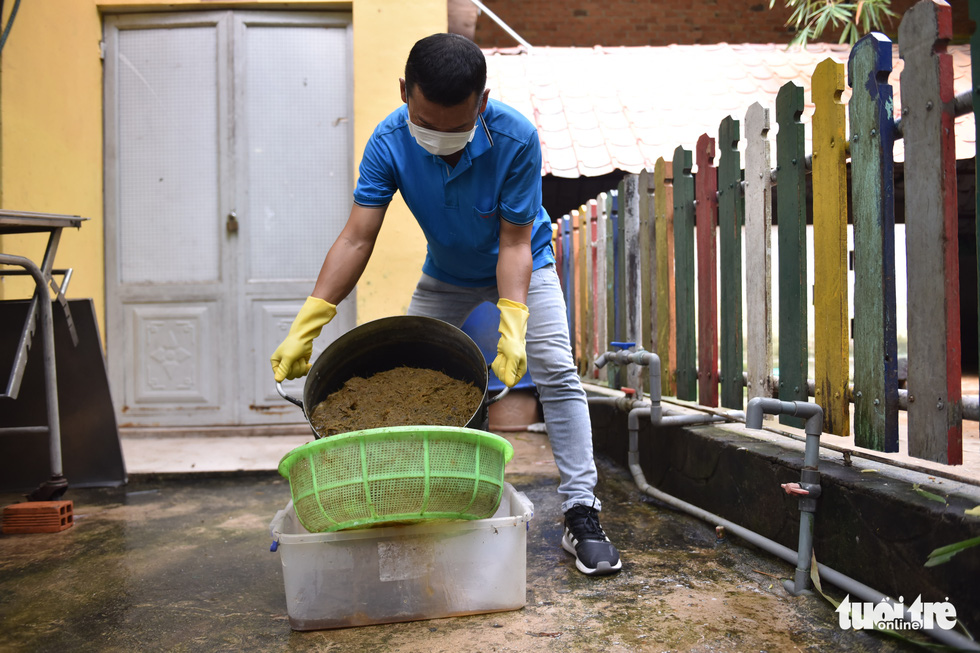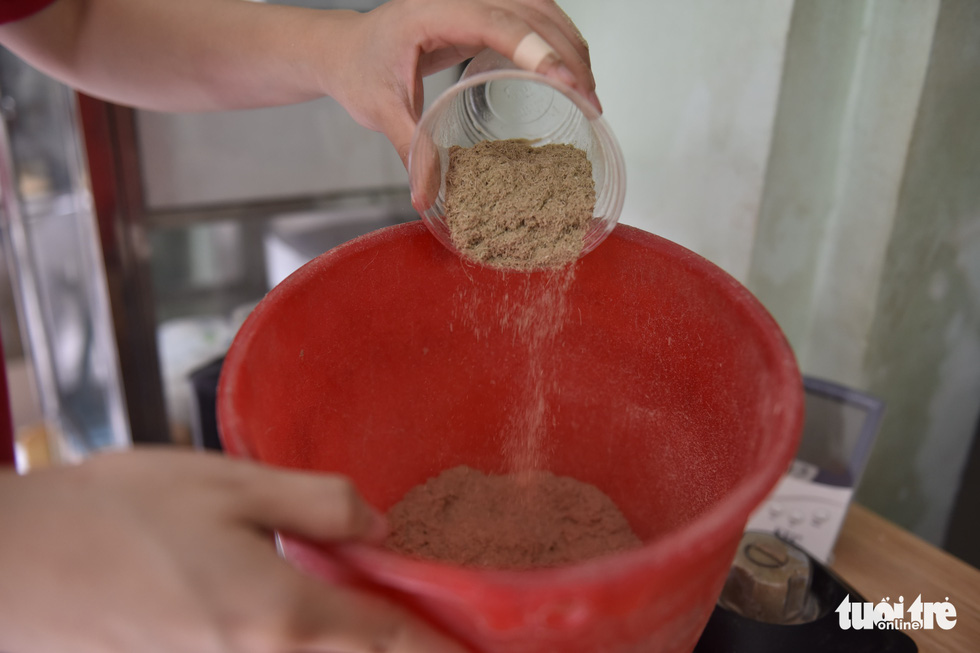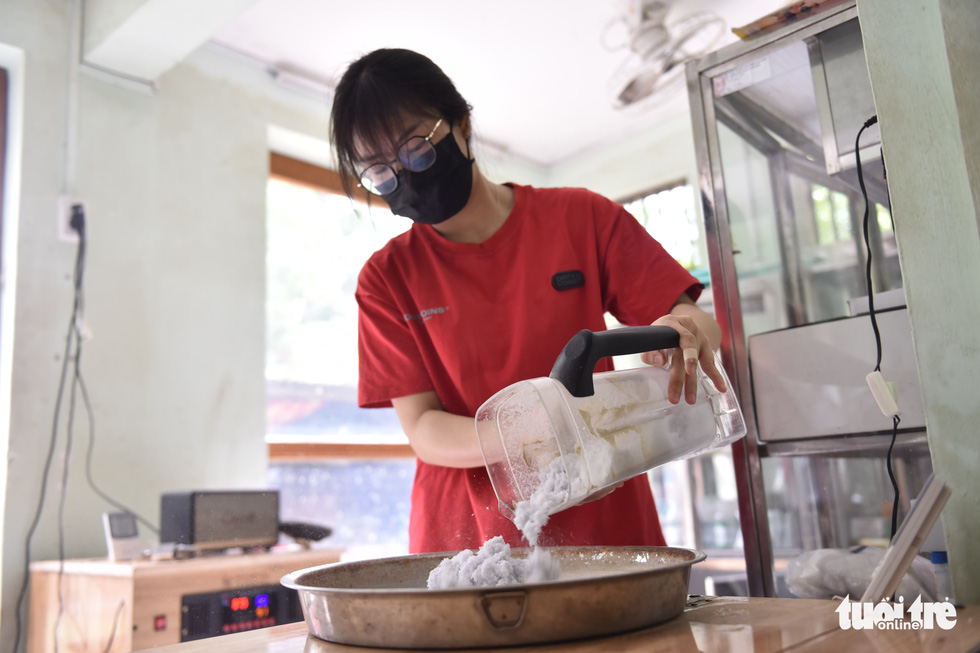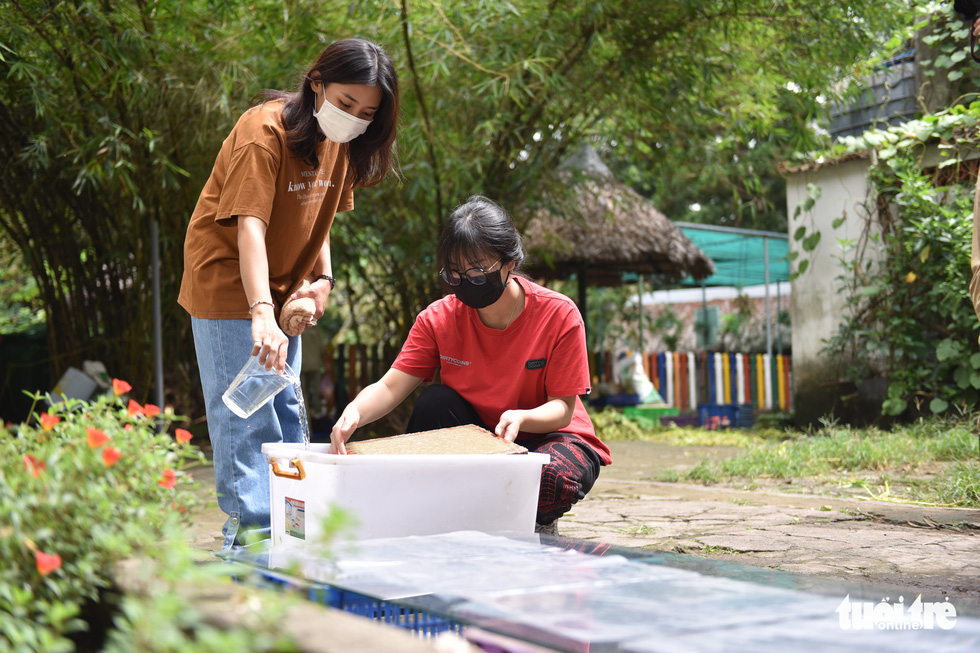After conducting extensive research for a period of eight months, we successfully produced the first ever papers made from elephant dung.
The crew has been diligently working on developing chemical-free procedures to produce paper from elephant excrement as a means of promoting wildlife conservation.
|
|
| Zookeepers at Saigon Zoo and Botanical Gardens collect elephant dung at the animal’s enclosure. Photo: Ngoc Phuong – Phuong Quyen / Tuoi Tre |
Elephants primarily consume grass and vegetables, resulting in their feces being clumpy and rich in fiber. Historically, this waste was either disposed of or utilized as fertilizer.
According to Dang Kieu Anh, a student majoring in animal husbandry at HUTECH, the group engages in weekend activities where they recycle excrement into paper.
Anh explains that the initial phase of transforming elephant dung into paper involves washing the waste to eliminate impurities, thereby isolating only the fiber necessary for recycling.
|
|
| Mai Khac Trung Truc, director of the Saigon Zoo and Botanical Gardens, washes the elephant dung. Photo: Ngoc Phuong – Phuong Quyen / Tuoi Tre |
“Next, the fiber undergoes a boiling process to effectively remove all bacteria and eliminate any lingering odor.”
After boiling, the fiber will be dried in the sun and then mixed together.
The blended fiber will be combined with a mixture of water, paper pulp, and tapioca starch.
The desired outcome will be achieved by transferring the mixture into a mold and subjecting it to sun exposure for the purpose of drying.
|
|
| The blended elephant dung is being mixed with paper pulp and tapioca starch. Photo: Ngoc Phuong – Phuong Quyen / Tuoi Tre |
Mai Khac Trung Truc, Director of the Saigon Zoo and Botanical Gardens, spoke about the innovative concept of utilizing elephant dung to produce paper. This approach holds great potential, particularly in light of the diminishing forest area and the declining population of elephants both in their natural habitat and in captivity.
“With the objective of recycling elephant dung, this product has the potential to inspire collaboration towards environmental and elephant conservation,” Truc stated.
Every 100 grams of a mixture of elephant dung can typically be recycled into seven to eight sheets of paper of equivalent thickness.
We are conducting research to improve the quality of the paper in order to make it more user-friendly.
Unfortunately, the sheets are not available for sale to the general public at this time.
“We are pleased to provide paper for the creation of educational materials for children.”
|
|
| A student pours the mixture of elephant dung into a tray. Photo: Ngoc Phuong – Phuong Quyen / Tuoi Tre |
|
|
| Students filter the mixture through a mold, leaving paper paste residues. Photo: Ngoc Phuong – Phuong Quyen / Tuoi Tre |
|
|
| The finished products of elephant dung paper. Photo: Ngoc Phuong – Phuong Quyen / Tuoi Tre |
Like us on Facebook or follow us on Twitter to stay updated with the latest news about Vietnam!
Efforts to protect Delacour’s langurs in Ha Nam
Since Fauna & Flora International (FFI) discovered Delacour’s langurs in Kim Bang forest in Ha Nam province in 2016, the organisation has joined hands with local authorities to protect the endangered species.

